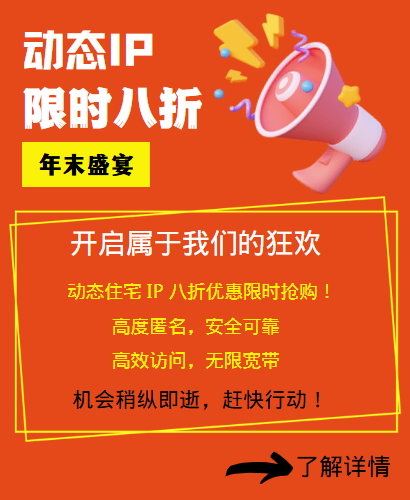Tunnel HTTP proxy and forward HTTP proxy are two common network proxy technologies, which have some differences in working principles and application scenarios. In this article, we will explore the difference between tunnel HTTP proxy and forward HTTP proxy.
First of all, the working principles of tunnel HTTP proxy and forward HTTP proxy are different. Tunnel HTTP proxy establishes a tunnel between the client and the target server, and transmits HTTP requests and responses through the tunnel. This tunnel can be implemented through various protocols, such as HTTP, HTTPS, SOCKS, etc. When a user sends an HTTP request, the request is first sent to the proxy server, and then the proxy server forwards the request to the target server. After receiving the request, the target server sends the response back to the proxy server, which is then forwarded to the client. In this way, the communication between the client and the target server is controlled and managed by the proxy server.

Forward HTTP proxy establishes a proxy server between the client and the target server, and the client sends the HTTP request to the proxy server, which then forwards the request to the target server. After receiving the request, the target server sends the response back to the proxy server, which is then forwarded to the client by the proxy server. Unlike tunnel HTTP proxy, forward HTTP proxy does not need to establish a tunnel, but directly forwards the request and response through the proxy server.
Secondly, the application scenarios of tunnel HTTP proxy and forward HTTP proxy are also different. Tunnel HTTP proxy is usually used to bypass network restrictions and firewalls to protect user privacy and security. Users can access blocked websites or bypass company access restrictions through tunnel HTTP proxy. In addition, tunnel HTTP proxy can also provide better network performance and load balancing, cache commonly used web page content, and reduce access pressure on the target server.
Forward HTTP proxy is more used for network acceleration and load balancing. Forward HTTP proxy can cache commonly used web page content. When multiple users request the same content, the proxy server can directly return the cached content to increase the loading speed of the web page. In addition, forward HTTP proxy can also distribute requests to multiple target servers according to the load situation to achieve load balancing and improve the availability and performance of the system.
In summary, tunnel HTTP proxy and forward HTTP proxy are different in working principles and application scenarios. Tunnel HTTP proxy controls and manages the communication between the client and the target server by establishing a tunnel, which is mainly used to bypass network restrictions and firewalls. Forward HTTP proxy directly forwards requests and responses through the proxy server, mainly used for network acceleration and load balancing. According to specific needs and application scenarios, choosing the appropriate proxy technology can provide better network experience and services.
Related Recommendations
- Expanding Amazon's business boundaries: The perfect combination of cross-border e-commerce and agent IP
- Tailor Your Internet Access with 98IP Home Residential IPs
- How to successfully operate Jade Live Broadcast on TikTok?
- Analysis of the benefits of using foreign static IP
- How should cross-border e-commerce detect the purity of IP addresses?
- How to use http proxy to create Amazon hidden accounts?
- Cross-border product selection must be known: rely on dynamic IP to accurately "grasp" market data
- How to query the IP address in Win11 system
- Game studio lockdown prevention: Multi-IP solution for competitive games
- Solving common Pinterest marketing challenges

